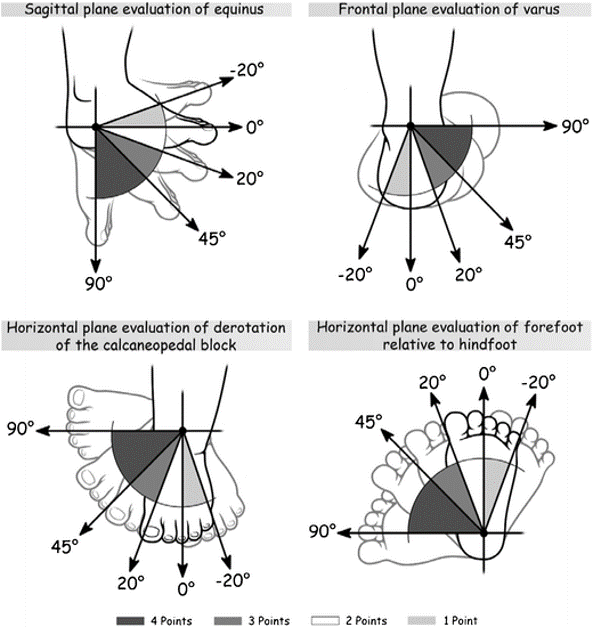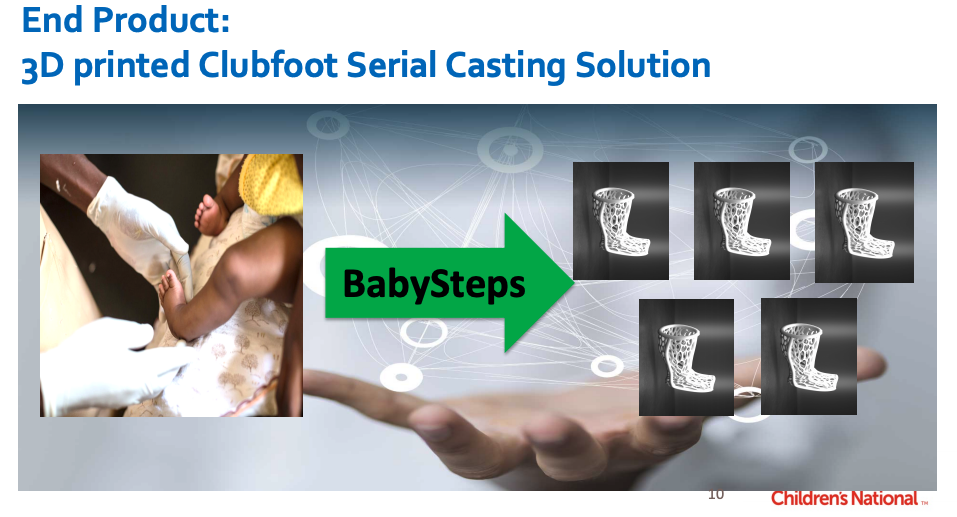 NA-MIC Project Weeks
NA-MIC Project Weeks
Back to Projects List
BabySteps: 3D Printing Using Slicer for creating clubfoot casts
Key Investigators
- Hadi Fooladi, Children’s National
- Pooneh Roshanitabrizi, Children’s National
- Steve Pieper, Isomics, Inc.
- Kevin Cleary, Children’s National
- Anuradha Dayal, Children’s National
Project Description
About 1-2 in every 1000 babies are born with what’s called clubfoot, the most common skeletal deformity in children.
Clubfoot is well treated using a plaster casting method developed in the 1960s, but there is a potential to use 3D scanning and printing techniques to make the process more efficient and cost-effective. Also easier activities of daily living for families with plastic instead of plaster casts.
Objective
- Ideal system would take a surface scan of baby’s foot, either with phone or custom camera
- Computer would generate sequence of cast shapes customized to baby
- 3D printing models would be exported (STL) for generating custom casts
Approach and Plan
- 3D Scanning of the clubfoot cast
- Loading the 3D model into Slicer
- Selecting anatomical landmark points on the 3D model
- Deforming the clubfoot 3D model through provided controls and widgets for printing next cast
- 3D printing the deformed clubfoot model
- Repeating the process until printing the normal cast

Progress and Next Steps
- 3D Scan
- Challenge:
- Baby’s foot is moving
- Ideas:
- Using off the shelf 3D scanners
- Currently we are using this approach but the result is not good
- Molding the foot and CT scan the mold
- Using motion capture cameras/techniques
- Using a parametrized generic 3D model (No need to scan)
- Using off the shelf 3D scanners
- Challenge:
- Measurement

- Deformation
- Using skeletal animation available in 3D modeling applications
- Using anatomically/physics based sumulation applications like OpenSim
- Using OsteotomyPlanner slicer extension
| Before | After |
|---|---|
 |
 |
- 3D Print
- Cost Effectiveness
- Easy to apply/clean/remove
Illustrations

Files
3D Models: